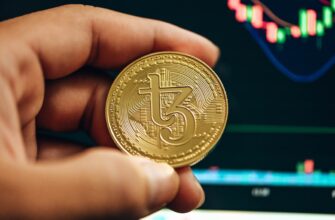- What is LSTM and Why Use It for Cryptocurrency Prediction?
- Setting Up Your Python Environment
- Step-by-Step LSTM Implementation for Crypto Prediction
- Data Preparation
- Building the LSTM Model
- Training and Prediction
- Challenges and Practical Considerations
- Frequently Asked Questions (FAQ)
- Can LSTM accurately predict cryptocurrency prices?
- What’s the optimal sequence length for crypto LSTM models?
- Should I use multivariate LSTM for crypto prediction?
- How much historical data is needed?
- Can I predict altcoins with this method?
What is LSTM and Why Use It for Cryptocurrency Prediction?
Long Short-Term Memory (LSTM) networks are a specialized type of recurrent neural network (RNN) designed to recognize patterns in sequential data. Unlike traditional RNNs, LSTMs excel at capturing long-range dependencies through their unique memory cell architecture, making them ideal for time-series forecasting like cryptocurrency prices. Here’s why they dominate crypto prediction:
- Handles volatility: Learns from erratic price swings and market sentiment shifts
- Sequential data mastery: Processes time-ordered data points (OHLCV: Open/High/Low/Close/Volume)
- Non-linear pattern detection: Identifies complex relationships missed by statistical models
- Adaptive learning: Continuously improves predictions with new data
Setting Up Your Python Environment
Before building your LSTM model, configure your workspace with these essential tools:
- Install Python 3.8+ via Anaconda for package management
- Key libraries:
pip install tensorflow keras pandas numpy matplotlib scikit-learn yfinance - Data source: Use Yahoo Finance (
yfinance) for historical crypto data - Hardware: GPU acceleration (CUDA) recommended for faster training
Step-by-Step LSTM Implementation for Crypto Prediction
Data Preparation
Start by fetching and preprocessing Bitcoin historical data:
import yfinance as yf
# Fetch 5 years of Bitcoin data
btc = yf.download('BTC-USD', start='2018-01-01', end='2023-01-01')
# Normalize using MinMaxScaler
from sklearn.preprocessing import MinMaxScaler
scaler = MinMaxScaler(feature_range=(0,1))
scaled_data = scaler.fit_transform(btc['Close'].values.reshape(-1,1))Building the LSTM Model
Construct the neural network architecture in Keras:
from keras.models import Sequential
from keras.layers import LSTM, Dense, Dropout
model = Sequential()
model.add(LSTM(units=50, return_sequences=True, input_shape=(60, 1)))
model.add(Dropout(0.2))
model.add(LSTM(units=50, return_sequences=False))
model.add(Dense(25))
model.add(Dense(1))
model.compile(optimizer='adam', loss='mean_squared_error')Training and Prediction
- Create sequences (60 days → 1 prediction)
- Split into 80% training / 20% testing sets
- Train for 25 epochs with batch size 32
- Generate predictions and inverse-transform scaling
Challenges and Practical Considerations
- Black swan events: Pandemics or regulations can invalidate patterns
- Overfitting risk: Mitigate with dropout layers and regularization
- Feature engineering: Incorporate technical indicators (RSI, MACD)
- Model decay: Retrain weekly with fresh data
- Alternative assets: Test with Ethereum (ETH-USD) or Binance Coin (BNB-USD)
Frequently Asked Questions (FAQ)
Can LSTM accurately predict cryptocurrency prices?
LSTM models identify probabilistic patterns but can’t guarantee accuracy due to market volatility and external factors. Most successful implementations achieve 55-70% directional accuracy.
What’s the optimal sequence length for crypto LSTM models?
Typically 30-90 days. Test different windows using walk-forward validation. Shorter sequences react faster to trends; longer sequences capture macro cycles.
Should I use multivariate LSTM for crypto prediction?
Yes. Incorporating volume, social sentiment, and BTC dominance metrics often improves performance by 10-15% compared to price-only models.
How much historical data is needed?
Minimum 2 years of daily data (700+ points). For hourly predictions, 6 months of hourly data (~4,380 points) is recommended.
Can I predict altcoins with this method?
Yes, but correlate with Bitcoin’s movement. Add BTC price as a feature since most altcoins follow Bitcoin’s market trends.








